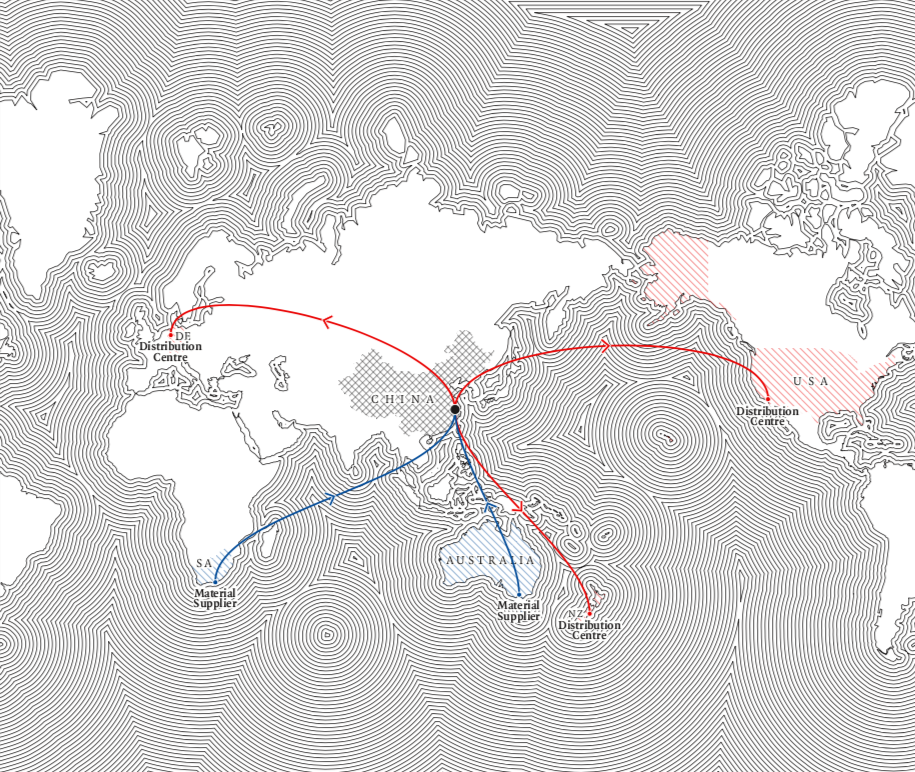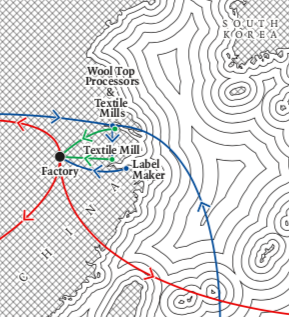Supply chain mapping company Sourcemap is at the forefront of the drive to ensure consumers know the backstory of their consumption, at unprecedented levels of detail

The naïve runaway consumerism of the latter stages of the last century is grinding to a halt. While we may be shopping and curating our lives more than ever, our erstwhile bubble-like pseudo-reality – in which products dropped, gleaming, from the heavens on to the shelves of our favourite store – is bursting. Buyers are wising up to the fact that every product has a backstory – indeed, that most products are not singular items at all, but composites of several parts, each with their own journey and ethical footprint. Slowly but surely, words like ‘traceability’ and ‘transparency’ are becoming central to the worlds of production and commerce.
Integral to this changing mood is supply chain mapping – the charting of the pathways of an item, from the sourcing of its most elementary parts through to sale. While this process can simply be a tool for optimising commercial output, it is increasingly being used by ethically minded companies to track and prove to their customer base – and to themselves – that all of their facets adhere to their brand values. Leonardo Bonanni, CEO of New York-based supply chain-mapping startup Sourcemap describes the changing tide: “Ten years ago industries often weren’t accounting for their supply chains. Now we have hundreds of thousands of farms and factories being directly accounted for by our customers, so what’s happening is tremendous in terms of real accountability that nobody thought anybody would want when I started.”
Sourcemap is distinct in the granular level of detail it allows users to upload to the interface, which is important in moving beyond rudimentary benchmarks of sustainability and ‘fair trading’, “even down to individual households and villages in producing areas, because users have been working with us for years to get that visibility,” Bonanni explains. “With that connection to the producing area, they can collect information on all the factors that influence, for example, child labour, availability of schools, water, health clinics, household incomes, work forces.” The potential real- Material supplier term benefits of enabling organisations to Textile Mill monitor factors outside of their usual narrow Distribution Centre remit are obvious, from both environmental Factory and humanitarian perspectives.

And increasingly, as shoppers become savvier, the effort is paying off. As Bonanni says: “More and more brands that can show to consumers they’ve taken the care to trace their products are able to command a better price.” It’s a benefit that is being mirrored throughout a supply chain, at each stage of production. “Fashion brands are leading the way on this now. Companies like VF and H&M are really going into detail; not just publishing a pdf with a list of factories, but really showing you, for a given product, the facilities where it was made.”
Now that the world finds itself gripped by a pandemic, the issue of supply disruption has never been more pertinent, finding Sourcemap providing an increasingly crucial service: “Every company now wishes they had a complete end-to-end supply chain map. It’s not just the private sector either: Cities, states and national governments are seeking to better map production and inventory so that they can make critical resources available those who need them.”
Clearly transparency is the way forward.